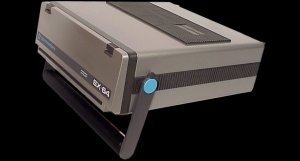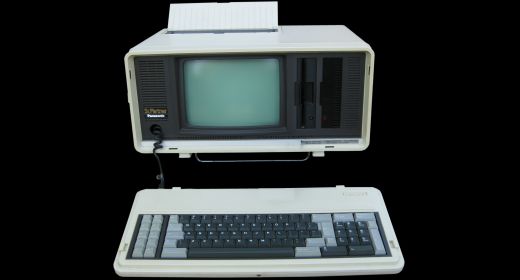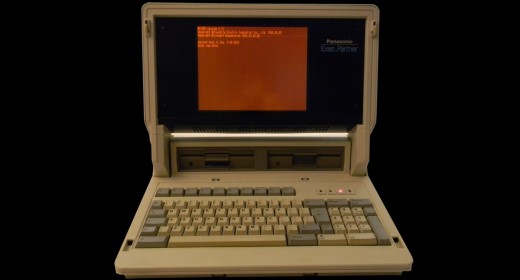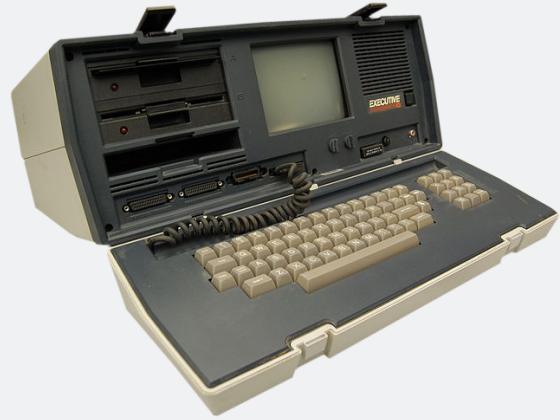
The Osborne Computer Corporation some original and successful computers. The Osborne Executive came right after their “Osborne 1” model. The Osborne Executive was the source of some improvements over the earlier model, with a larger screen, more memory, and the like. It was designed portable, but in those days that meant “luggable”, as in “luggage”. The price for the Osborne Executive was slightly above the IBM computers. It retailed at $2495.
The Osborne Executive looked like a sewing machine when it was closed. It weighed nearly 29 pounds and was 19.7 inches in width. Osborne made the display a monochrome amber display that was seven inches in diameter. There were still some people who said that was small as well. When the user opened the Osborne Executive, they found a front panel divided into four parts. On the left were the horizontally mounted floppy drives. In the middle was the monitor. On the right was the cooling fan. Under all of this were connectors, including one for the detachable keyboard. The package was uniquely colored in a bright white. Even though this was a portable computer, there was no battery included. It ran off regular house current via a built-in power supply that managed 110 or 220 volt service.
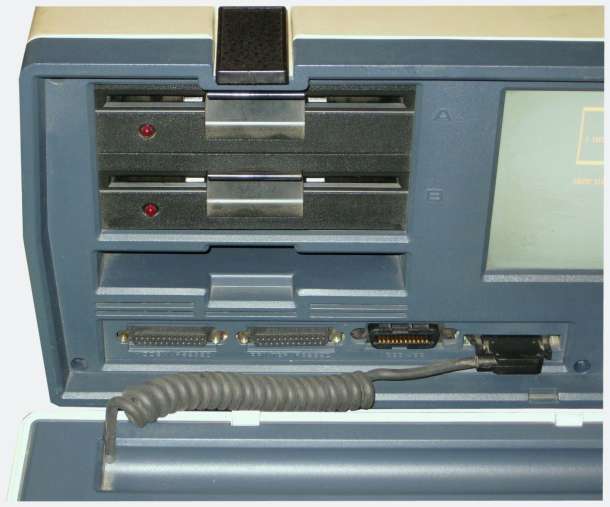
The internal workings of the Osborne Executive were a bit better than the previous model. They both used the same Zilog Z80 microprocessor. It ran at a speed of four megahertz. The random access memory ( RAM ) came in either 64 or 124 kilobytes. It could be upgraded to a maximum of 384 kilobytes. Osborne included a small amount of virtual RAM as well, sized at six kilobytes. The read-only memory was eight kilobytes in size. The floppy disk storage consisted of two half-height 5.25 inch drives. They held 195 kilobytes of information. Besides the keyboard, connections consisted of a composite video output, a monitor output, a Centronics connection, IEEE-488 connector and two RS 232c serial connectors.
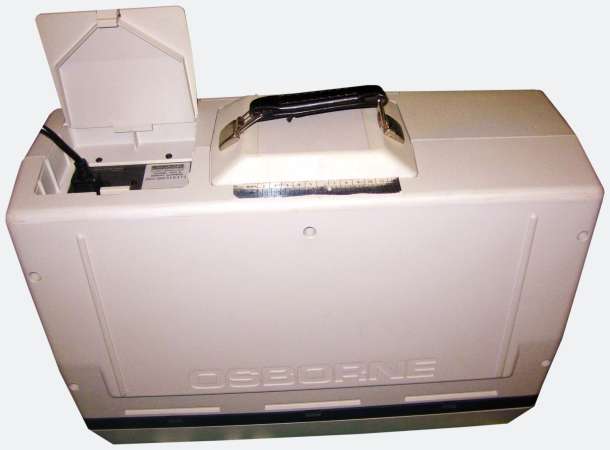
The operating system was the “Control Program for Microcomputers”, more popularly known as CP/M. The platform was accompanied by a slew of software, 14 disks to be exact. Some of the included titles were Wordstar 3.3, Supercalc 1.12, Pearl ( as a file manager ), Mailmerge, Microsoft BASIC 5.22, CBasic 2 and several utilities. The Osborne Executive could read disks from many providers, such as IBM, Xerox, Cromenco and UCSD ( Pascal ).
One of the unfortunate things about the Osborne Executive was that the owners were unaware of marketing strategies. The Executive was a computer that was a bit outdated, so Osborne decided to make an announcement of a future unit that was IBM compatible. The announcement caused a chill on the sales of this particular computer which eventually caused the company to go under. The Osborne Executive came out in 1982 and the company filed for bankruptcy in September of 1983.
